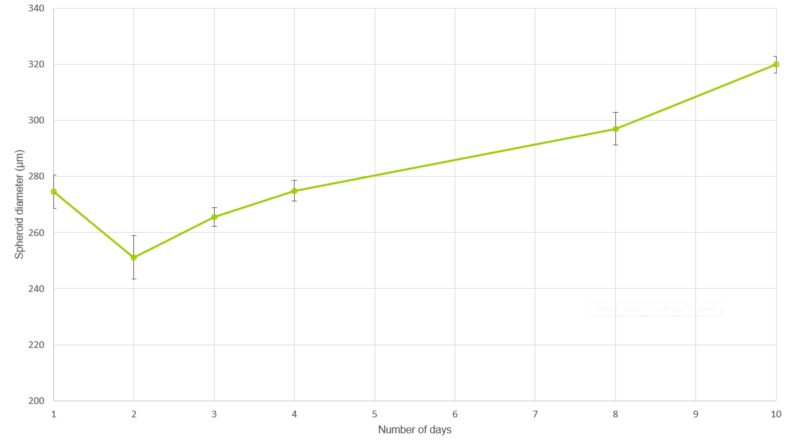Proliferation of cells in spheroids
Keeping track of spheroid growth over time
Keeping track of spheroid growth over time
6 Well plates – Microwells for spheroid assembly
Spheroid diameter, shape of spheroid
Most state-of-the art methods that are used for spheroid formation are limited by the fact that it is difficult for the scientist to keep track of individual spheroid parameters. Free floating spheroids make it nearly impossible to get solid data on individual spheroid growth. Additionally, the orientation of the spheroids is different for each observation.
4Dcell microwells for spheroid assembly enable the formation of spheroids with reproducible characteristics such as size and shape. Furthermore, the location of individual spheroids is predictable, which facilitates monitoring spheroids at a single organoid level. The adhesion (contact) point present in each microwell precludes the spheroids from being removed and mixed during manipulation.
In this example, a 6-well plate with microstructured gels was used to create the spheroids. Each gel contains 91 microwells and they were seeded with cell suspensions with a concentration of 3k of cells per microwell. For this particular experiment, mesenchymal stem cells were used.
Images of the cells were acquired at different time points after cell seeding so that the growth of the spheroid can be estimated by image analysis.
Spheroid size was assessed by measuring its diameter using ImageJ built-in measuring tool. The diameters of all spheroids for each different cell concentration were measured and averaged.

Figure 1. Growth of spheroid over time.

Figure 2. Evolution of spheroid size, during 10 days in culture, using 4Dcell hydrogels with microwells.
Figure 3. Mesenchymal Stem cells (MSCs) seeded in a 3D structured hydrogel designed for controlled spheroid formation (4Dcell SmartSphero plates)
This brief experiment shows how the 4DCELL microstructured gels serve as a suitable environment for the spheroids, facilitating growth. An average drop in diameter of 8.52% was observed with respect to the diameter of day 1. At this stage the spheroids were going through the contraction phase, where adhesion forces between cells make the aggregates more dense. After this phase all spheroids transitioned into a regular proliferation stage, and at day 10 the diameter had an average increase of 16.54% with respect to day 1.